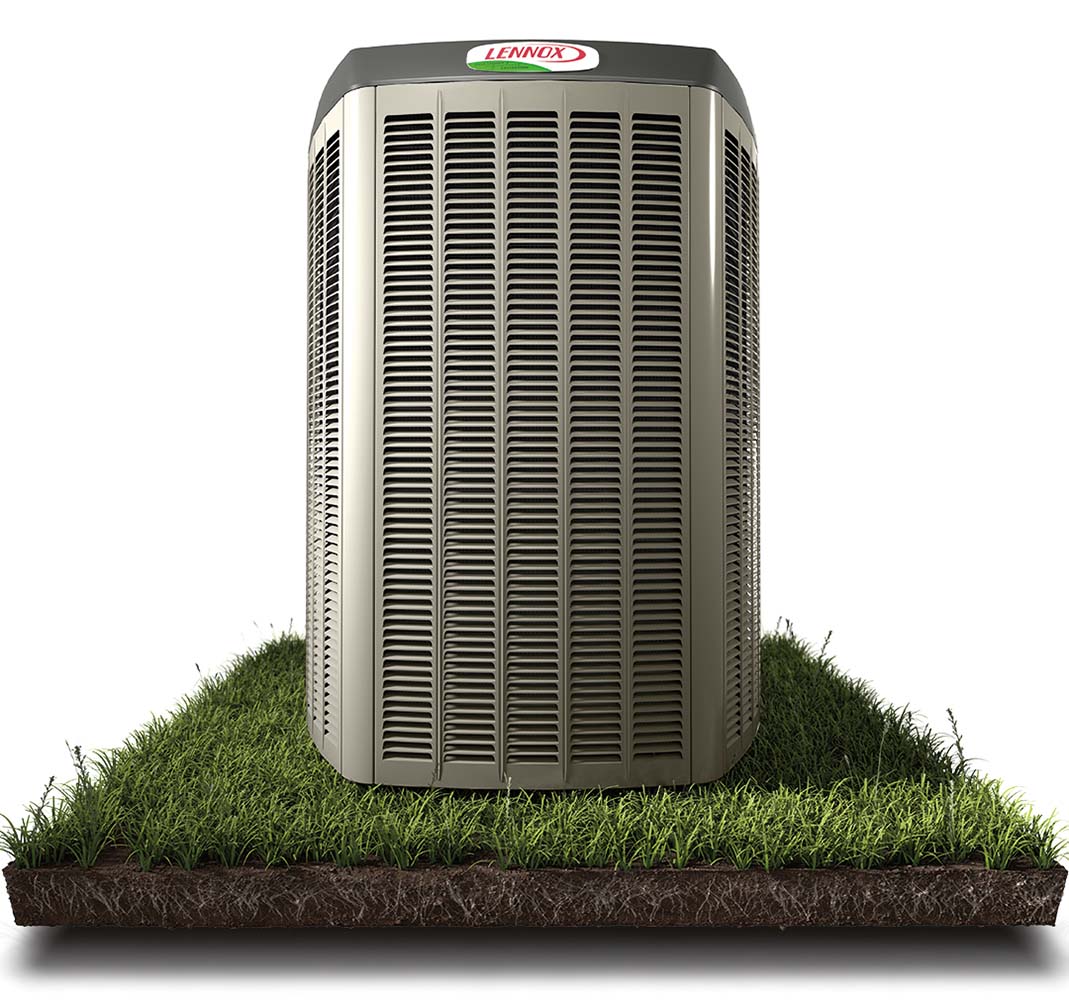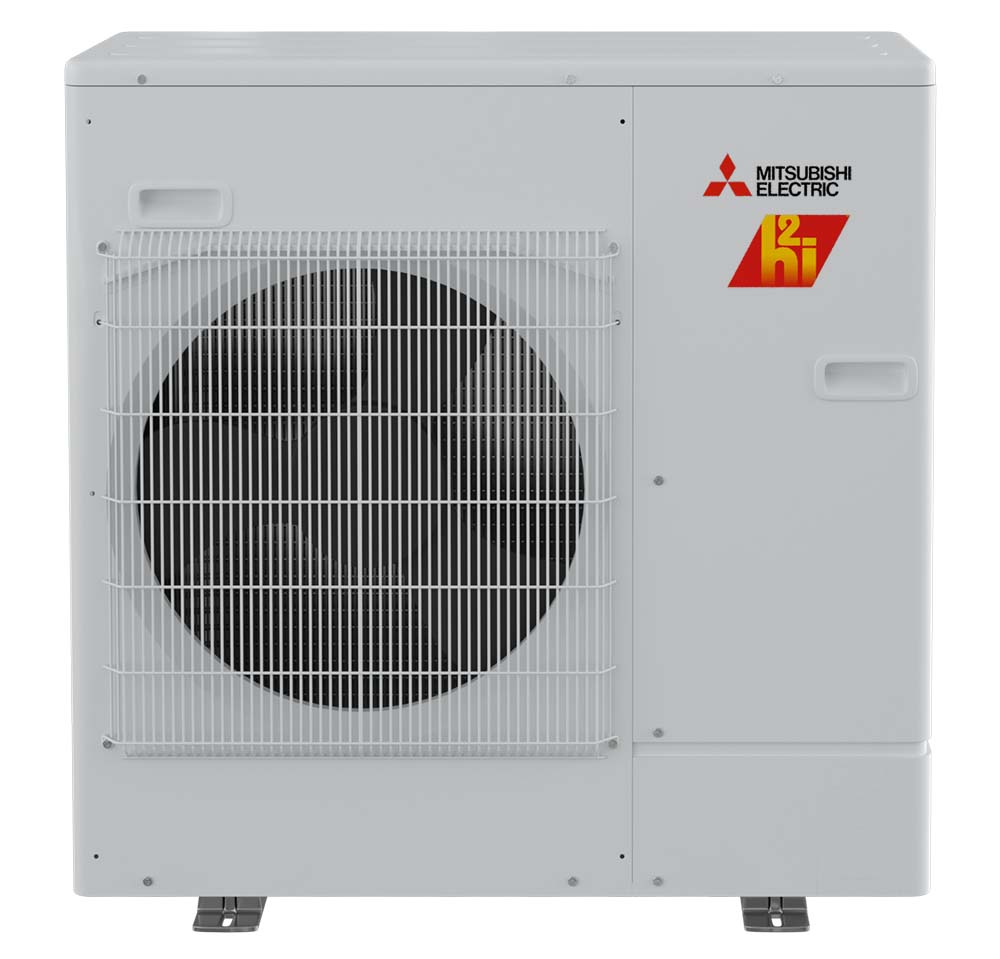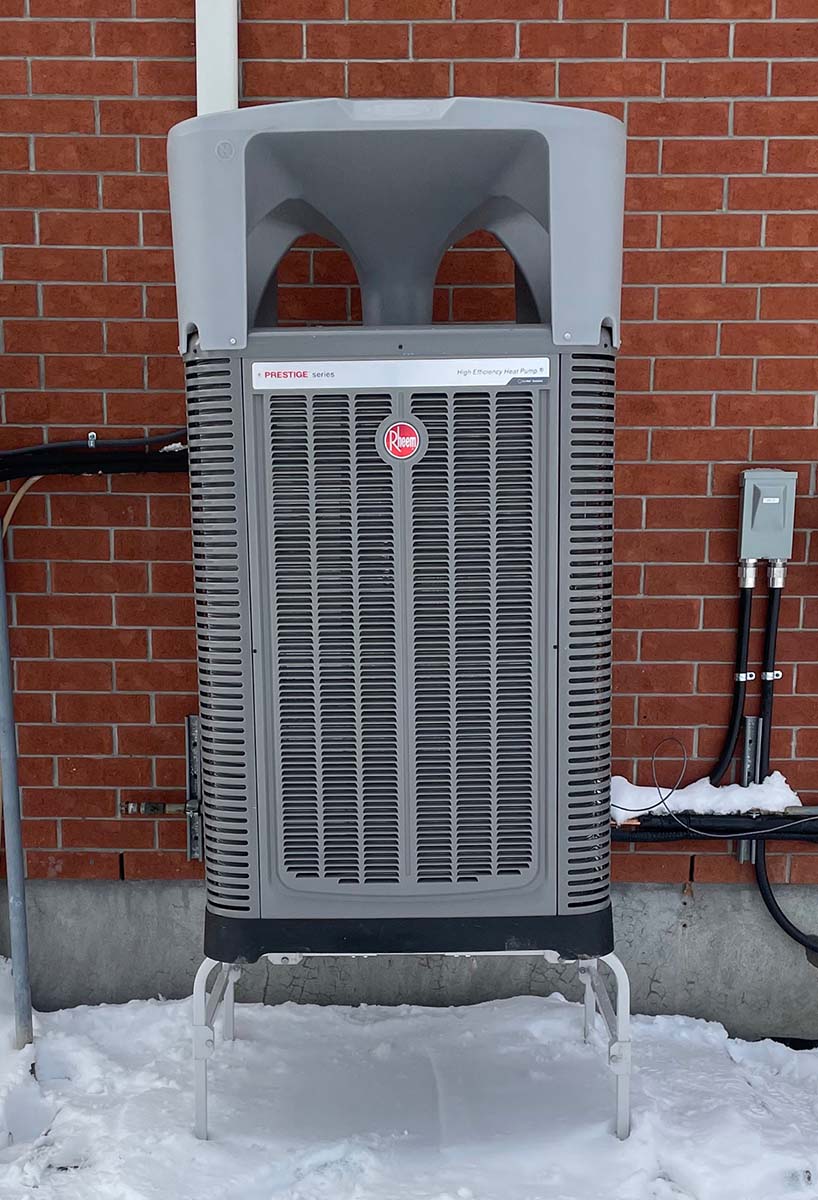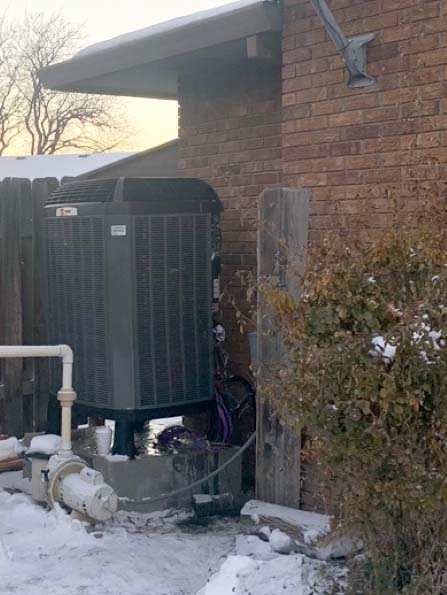The U.S. Department of Energy (DOE) is about halfway through its Cold Climate Heat Pump Technology Challenge (CCHPTC), a program designed to help manufacturers speed the development of the next generation of heat pumps and ensure that they will perform reliably during chilly winters in North America.
Ten HVAC manufacturers are participating in the challenge; some heat pump models were deployed last winter during an initial phase of field testing, while others are in various stages of laboratory testing. The Environmental Protection Agency (EPA) and Natural Resources Canada (NRCan) are also partners in the challenge, and number of utilities and energy cooperatives as well as state agencies in Northern states from Alaska to Maine are supporting it.
"The challenge is focused on addressing common technical and market barriers to wider adoption by consumers, which include performance at temperatures of 5°F and below, installation challenges, and electricity grid impacts during peak demand periods," the DOE said in statement to The ACHR NEWS.
The challenge is for electric, centrally ducted residential heat pumps of between 24,000 and 65,000 Btuh. There are two segments to the challenge — one for heat pumps optimized for operation in temperatures down to 5°F, the other for models optimized for operation at temperatures down to -15°F.
DOE officials are still exploring the best way to publish and share data from the CCHPTC once it's concluded. The department's goal is to have heat pumps developed through the challenge brought to market by 2024.
Here's where each of the 10 participating manufacturers recently stood in the challenge:
Bosch
Bosch is "fully aligned" with the DOE's goal of electrification, said Katelyn Woodling, manager of product development at Bosch Home Comfort.
"We’re excited by the progress we’ve made to date in the residential Cold Climate Heat Pump Technology Challenge and continue to work diligently to identify and implement innovative solutions to meet the program’s criteria," Woodling said. "We are confident in the progress we are making toward producing heat pumps that work efficiently in cold climates."
Carrier
Carrier was testing three prototypes based on its Inifinity 24 model but could not yet share results, said Jason Thomas, director of regulatory affairs at Carrier HVAC.
"We are pleased with the performance of the units to this point," Thomas said. "Field trials are a normal step in our development process and, as is typical in this phase, we are learning details about the operation in homes that will ensure the product released to the market is of the highest performance and quality, which is what our customers expect and deserve."
Daikin
Daikin had completed internal testing and private field trials, but testing in a DOE lab is scheduled for later this summer, so the company was not in a position to provide results, said John D. Schwartz, marketing and communications manager for Daikin Comfort Technologies North America Inc.
"As an industry leader in inverter compressor technology, a key component for heat pump performance and efficiency in Northern climates, Daikin is excited about its continued commitment" to the CCHPTC, Schwartz said.
Johnson Controls
Johnson Controls has completed design and internal testing of its model, which was undergoing testing in July at the Oak Ridge National Laboratory in Tennessee.
“We are pushing the limits of performance at extremely cold ambient temperatures, and we are eager to share our submitted unit’s performance and efficiency,” said David Budzinski, president of Global Residential & Light Commercial at Johnson Controls. “Heat pumps represent one of Johnson Controls’ fastest-growing segments of our residential product portfolio, and we’re very proud to be developing the next generation of cold-climate technology to serve our customers.”
Lennox

FIELD TRIALS: A Lennox heat pump of the kind being tested at three homes in the U.S. and one in Canada as part of the Cold Climate Heat Pump Technology Challenge. (Courtesy of Lennox)
Lennox was the first OEM to finish lab testing, the DOE said. The company installed four systems in the field, three in the Northern U.S., and one in Canada, in late 2022 and early this year, said Tim Brizendine, director of product management at Lennox.
"These systems are being monitored with data-recording equipment to log the performance and efficiency of the systems throughout the several seasons," Brizendine said. "It has only been a few months, but thus far, the systems are operating as expected and we have received positive feedback from the homeowners.”
The heating capacities of the models in the field were matched to the requirements of the sites at which they were installed, Brizendine said. Most required a 3-ton heat pump.
LG
An LG heat pump with a capacity of 40,000 Btuh, using R-32 refrigerant, was being tested at the Oak Ridge laboratory, said John I. Taylor, senior vice president of LG Electronics USA Inc. Testing is expected to be completed this summer.
"LG's own testing in the factory before the unit was delivered to the Oak Ridge lab showed excellent performance," Taylor said.
Midea
"Midea has completed design and internal testing, and is waiting for official DOE testing before announcing performance criteria," said a statement from the company.
Midea plans to market heat pumps of between 2 and 5 tons of capacity that exceed challenge requirements, the company said.
Mitsubishi

HYPER HEATING: Mitsubishi was awaiting Department of Energy testing of its entry into the Cold Climate Heat Pump Technology Challenge. Pictured is an H2i (short for hyper heating inverter) heat pump. (Courtesy of Mitsubishi Electric)
Mitsubishi Electric was awaiting verification testing at the Oak Ridge lab of a 24,000 Btuh model and had not begun field testing, said Kennard Edwards II, senior manager of research and development engineering at Mitsubishi Electric’s U.S. heating and air-conditioning division.
The model has an HSPF2 of 10.4 and a CoP of 1.9, both above the Energy Star heating performance metrics for cold climates, though it hadn't yet been tested under conditions specific to the CCHPTC, Edwards said.
"Mitsubishi Electric is optimistic about the future of cold-climate heat pumps and is looking forward to entering our products into the field," Edwards said. "We want to do our part to help bring awareness to this incredible technology and help the DOE further this initiative."
Rheem

WEATHERPROOF: A Rheem heat pump, installed at a field-testing site in a Northern climate, meets the call for heat during snowy weather. (Courtesy of Rheem)
Field trials of Rheem prototype heat pumps were ongoing, said Jeff Goss, director of product management at Rheem.
In DOE testing, a 35,000 Btuh model "delivered outstanding results," the company said.
At an ambient temperature of -15°F, the unit provided 77% of nominal heating capacity, and it continued operating uninterrupted down to -23°F, Goss said. The unit's CoP and HSPF2 exceeded DOE specifications for the challenge, Goss said.
“Rheem is committed to making a difference with the products we create, and our sustainability efforts know no bounds,” Goss said.
Trane

CHALLENGING CONDITIONS: A Trane heat pump has been through its first winter of field testing at a residential building in Boise, Idaho, as part of the Cold Climate Heat Pump Technology Challenge. (Courtesy of Trane Technologies)
Trane has a prototype cold-climate heat pump deployed at a residential building in Boise, Idaho, said Katie Davis, vice president of engineering and technology in the residential HVAC division at Trane Technologies.
"The system is performing quite well, and during our first winter season, it operated primarily without the need for electric heat," Davis said. "The system will continue to run through the summer of 2023 and the winter of 2023, as required" by the challenge.
During DOE testing at Oak Ridge, Davis said, the prototype performed at temperatures down to -23°F.
"Without giving away the full details of our performance across a broad range of very cold temperatures, I can say that we are performing at a significant capacity ratio above 50%, at -23°, as well as a CoP above the CoP of running electric heat alone, at that same temperature," Davis said.



Report Abusive Comment